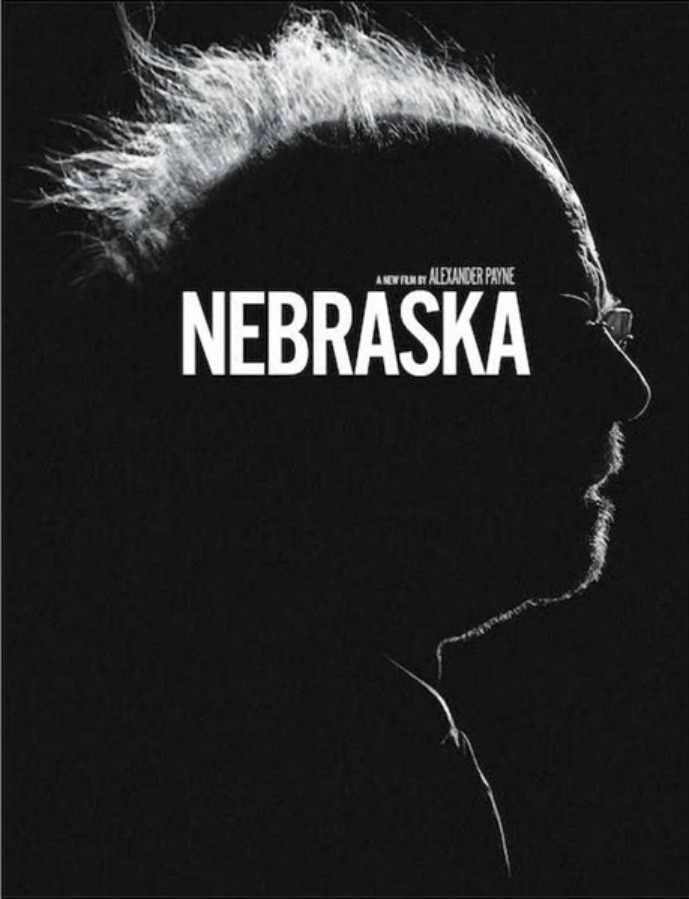Ladies and Gentlemen:
All of the Chatham community is concerned for its future and want it to remain a viable, thriving, relevant university. President Ronald Reagan quoted an old Russian proverb when he signed the INF Treaty in January, 1987; “trust but verify”. I believe it is time for us to verify the information obtained by the Board of Trustees that has led to its apparent “leanings” toward changing the College for Women from a single-sex institution.
Noel-Levitz, Inc. issued a report1 based upon university self-reported data in October, 2011. Chatham University participated in this survey that generated a report titled “2011 Cost of Recruiting an Undergraduate Student Benchmarks for Four-Year and Two-Year Institutions”. According to the report, of the 236 colleges and universities (including Chatham) that responded between 10/12/11 and 10/28/11, 165 were four-year private, 49 were four-year public, and 22 were two-year public institutions.
Summarizing Noel-Levitz:
- The median cost to recruit a single student was steady between 2011 and 2009
- Four-year private colleges and universities spent an average of $2,185 per new student at the median. They used the most staff per new student, with a ratio of 1 Full Time Equivalent for every 33 new students.
The survey respondents self-reported:
- Staff salaries, including benefits, for full and part-time employees working in recruitment and admissions positions, including temporary and work-study employees and supervisors with additional responsibilities outside of recruitment and admissions
- Capital costs and equipment
- Supplies
- Travel
- Publications and advertising
- Consulting services
- Vendor/outsourced services and
- Additional expenses not named, such as costs incurred with recruiting and admissions that might be covered by departments, excluding grants and scholarships.
Noel-Levitz reported a steady median expenditure per 4-year Private Institution student from the period 2005 – 2011.
|
2005
|
2007
|
2009
|
2011
|
|
$ 2,073
|
$ 1,941
|
$ 2,143
|
$ 2,185
|
Question 1:
- What were the comparable expenditures for Chatham for each of the cited years – 2005, 2007, 2009, 2011?
- What was the expenditure for fiscal 2013?
- What is the budget for fiscal 2014?
- What is the anticipated budget for fiscal 2015?
Noel-Levitz found “smaller schools continue to spend more per new student, larger schools continue to spend less”. The four-year Private Institutions reported
|
Percentile
|
Overall
|
Smallest third in enrollment size
|
Middle third in enrollment size
|
Largest third in enrollment size
|
|
25th
|
$ 1,364
|
$ 1,761
|
$ 1,368
|
$ 1,234
|
|
Median
|
$ 2,351
|
$ 2,351
|
$ 2,304
|
$ 1,781
|
|
75th percentile
|
$ 3,519
|
$ 3,519
|
$ 2,975
|
$ 2,964
|
Question 2:
- What were the comparable expenditures for Chatham for each of the cited years – 2005, 2007,
2009, 2011?
b. What was the expenditure for fiscal 2013?
c. What is the budget for fiscal 2014?
d. What is the anticipated budget for fiscal 2015?
Noel-Levitz reported four-year private institutions and smaller institutions use “more staff for each new undergraduate enrollee. The smallest four-year institutions used the most staff per new student”.
|
Percentile
|
Overall
|
Smallest third in enrollment size
|
Middle third in enrollment size
|
Largest third in enrollment size
|
|
25th
|
24
|
19
|
27
|
31
|
|
Median
|
33
|
25
|
33
|
41
|
|
75th percentile
|
43
|
35
|
39
|
59
|
Question 3:
- Does Chatham’s admissions department meet or exceed the efficiency cited for (at least) the median?
- What were the acquisition numbers by years historically and for fiscal 2014?
- If Chatham does not meet or exceed the efficiency cited for the median, what institutional challenges should be addressed?
- Where is Chatham with respects to an anticipated action plan?
Noel-Levitz reported four-year private institutions and smaller institutions “use more outreach staff per student” including “high school visits, college fairs, (and) on-campus events/tours”.
|
Percentile
|
Overall
|
Smallest third in enrollment size
|
Middle third in enrollment size
|
Largest third in enrollment size
|
|
25th
|
39
|
30
|
47
|
55
|
|
Median
|
57
|
43
|
59
|
77
|
|
75th percentile
|
81
|
57
|
78
|
106
|
Question 4:
- Does Chatham’s admissions department (including all outreach opportunities) meet or exceed the efficiency cited for (at least) the median?
- What were the acquisition numbers by years historically and for fiscal 2014?
- If Chatham does not meet or exceed the efficiency cited for the Median, what institutional challenges should be addressed?
- Where is Chatham with respects to an anticipated action plan?
The Noel-Levitz website2 included a blog exchange regarding the differences between undergraduate and graduate level recruitment. The below exchange is verbatim.
“January 13, 2012 at 2:41 p.m. As always this is a helpful report. Any thoughts on how this might differ at the graduate level? Are institutions typically spending more or less per graduate student? More or less staff dedicated to graduate student recruitment?” Andy Woodall.
“January 17, 2012 at 4:54 p.m. Mr. Woodall,
Unfortunately we do not have any normative data on graduate student recruitment costs but I suspect they would be considerably lower, at least in most disciplines. To your point, we tend to see far fewer staff devoted to graduate recruitment (at least in proportion to desired in-take) so that is why I believe costs would generally be lower on a per student basis.” Kevin Crockett.
Question 5:
- How has Chatham historically budgeted undergraduate vs. graduate admissions and recruitment (please respond by fiscal year)?
- What is the budget (undergraduate vs. graduate) for fiscal 2013?
- What is the anticipated budget (undergraduate vs. graduate) for fiscal 2014?
These are challenging times for individuals as well as non-profit organizations. The shrinking middle-class coupled with decreased government funding has led all to re-examine their budgets and allocation of resources. In her article3, Debra Erdley quoted Murray Rust, Chatham’s chair of the Board of Trustees when he justified Esther Barazzone’s $1.8 million salary for 2011. Ms. Erdley wrote “Chatham officials said they gave Barazzone the deferred compensation package in 2006 because before 2004 the school did not have the money for competitive executive packages. If she left before 2011, she would have forfeited the package”.
Ms. Erdley also wrote “Total compensation typically included a base salary, retirement or deferred compensation, bonuses, benefits and housing. Chronicle (The Chronicle of Higher Education) researchers found the median total compensation for all the leaders the survey covered was $410,523 in 2011, or 3.2 percent more than in 2010”.
Dr. Barazzone’s historical compensation, as reported by The Chronicle of Higher Education4 is below. To reiterate, the median total compensation for all leaders was $410,523 for 2011.
|
2008
|
2009
|
2010
|
2011
|
|
$ 571,738
|
$ 666,097
|
$ 601,917
|
$ 1,812,132
|
Question 6:
- What was the amount of deferred compensation for each year?
- On what basis was that amount awarded?
The Chronicle of Higher Education’s website allows the user to create its own salary comparisons4.
|
Institution
|
President
|
Compensation Package
|
|
Chatham University
|
Esther L. Barazzone
|
$ 1,812,132
|
|
Bryn Mawr College
|
Jane Dammen McAuliffe
|
$ 543,529
|
|
Swarthmore College
|
Rebecca S. Chopp
|
$ 701,755
|
|
University of Pennsylvania
|
Amy Gutmann
|
$ 2,091,764
|
|
Lehigh University
|
Alice P. Gast
|
$ 1,162,598
|
|
Washington and Jefferson College
|
Tori Haring-Smith
|
$ 561,566
|
|
Carnegie Mellon University
|
Jared L. Cohon
|
$ 946,095
|
Question 7:
- Did the Board of Trustees benchmark the compensation package ultimately negotiated by Dr. Barazzone?
- What outside resources were considered?
- Since Dr. Barazzone’s contract is scheduled to expire at the end of 2015, has the Board begun to consider the package to be paid, should she wish to extend her contract?
- If an agreement is not reached, (or if Dr. Barazzone opts to leave) what will the Board budget for Dr. Barazzone’s replacement? What parameters will be considered?
All boards of directors are charged with the legal duties of
- Care
- Loyalty and
- Obedience (to the organization’s Mission).
An article published in the University Of Pennsylvania Journal Of Business Law5 included a footnote citing “compensation practices…recommended as stemming from the IRS changes to Form 990”. The recommendations include:
“Adopt an executive compensation philosophy that outlines the process and procedures for reviewing and approving the total compensation paid to senior executives and ‘key employees’
“Appoint a compensation committee comprised of independent members of the board
“Adopt a compensation committee charter that sets out, among other things, the purpose, responsibility and authority of the compensation committee, including the following:
- Adherence to the compensation philosophy
- Compliance with the rebuttable presumption of reasonableness
- Use of an independent compensation consultant to provide comparability data…”.
I respectfully ask the Board to affirm to the community that it is in full compliance with its legal duties, and to
- Articulate, in writing, the steps that will be taken to demonstrate the consideration and review of the Women’s College status
- Share that information with the Community 30 days before a final decision is reached, allowing public debate before that vote
- Share the University’s full current balance sheet and proposed financial information for fiscal 2014
- Outline the process to be undertaken in advance of Dr. Barazzone’s next contract negotiation.
Thank you for your consideration.
Sandy Kuritzky, Class of 1973
1 The report can be obtained from the internet. See www.noellevitz.com/BenchmarkReports. The information and statistics sited are from this Report.
2 http://blog.noellevitz.com/2012/01/05/spending-student-recruitment/
3 http://triblive.com/news/adminpage/5243305-74/university-compensation-2011. Debra Erdley, December 15, 2013.
4 http:chronicle.com/article/Executive-Compensation-at/143541/
5 www.law.upen.edu/journals/jbl/articles/volume14/issue2. “Punctilios and Nonprofit Corporate Governance – A Comprehensive Look at Non-Profit Directors’ Fiduciary Duties” by Thomas Lee Hazen and Lisa Hazen.
Footnote 238. Yaffee & Co., The New Form 990 and Executive Compensation: “Best Practice”
Recommendations for Boards and Compensation Committees 4 – 5 (2009)
Footnote 239. Above citation.





